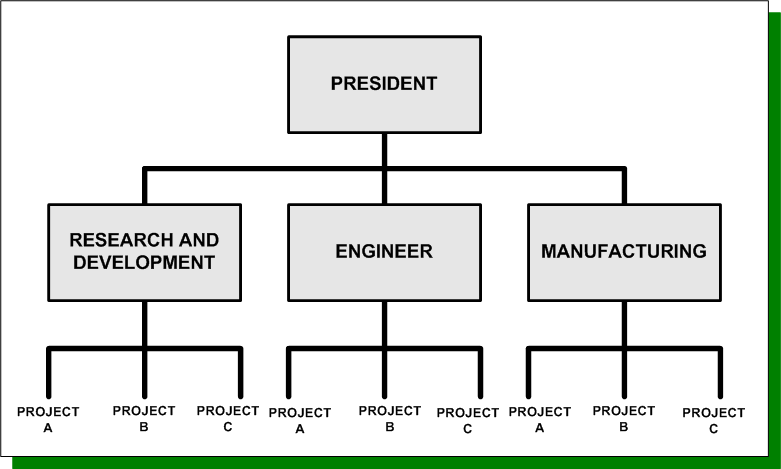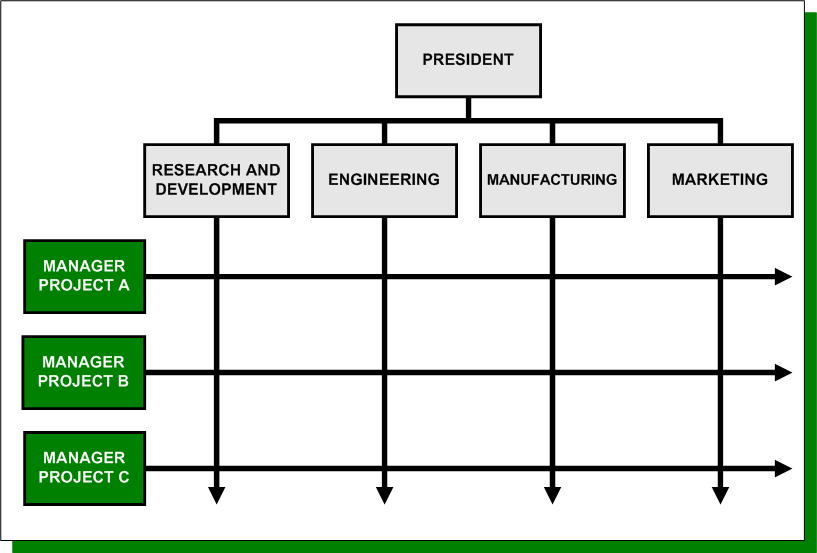
Pure Project
Tom Peters predicts that “most of the world’s work will be ‘brainwork’, done in semi-permanent networks of small project-orientated teams, each one an autonomous, entrepreneurial centre of opportunity; where the necessity for speed and flexibility dooms to the dodo’s fate the hierarchical management structures we and our ancestors grew up with.” 1 Thus, out of the three basic project organisational structures, Peters favours the pure project (nicknamed skunk works), where a self-contained team works full-time on the project.
Advantages
- The project manager has full authority over the project.
- Team members report to one boss; they do not have to worry about dividing loyalty with a functional-area manager.
- Lines of communication are shortened; decisions are made quickly.
- Team pride, motivation, and commitment are high.
Disadvantages
- Duplication of resources; equipment and people are not shared across projects.
- Organisational goals and policies are ignored, as team members are often both physically and psychologically removed from headquarters.
- The organisation falls behind in its knowledge of new technology due to a weakened functional division.
- Since team members have no functional area “home”, they worry about life-after-project, and project termination is delayed.
Functional Project
At the other end of the project organisation spectrum is the functional project, housing the project within a functional division.

Advantages
- A team member can work on several projects.
- Technical expertise is maintained within the functional area, even if individuals leave the project or organisation.
- The functional area is a “home” after the project is completed; functional specialists can advance vertically.
- A critical mass of specialised functional-area experts creates synergistic solutions to a project’s technical problems.
Disadvantages
- Aspects of the project that are not directly related to the functional area get short-changed.
- The motivation of team members is often weak.
- The needs of the client are secondary and are responded to too slowly.
Matrix Project
The classic specialised organisational form – the matrix – attempts to blend properties of functional and pure project structures. Each project utilises people from different functional areas. The project manager (PM) decides what tasks will be performed, and when, but the functional manager control which people and technologies are used.

Advantages
- Communication between functional divisions is enhanced.
- A project manager is held responsible for the successful completion of the project.
- Duplication of resources is minimised.
- Team members have a functional “home” after project completion, so they are less worried about “life-after-project” than if they were a pure project organisation
- Policies of the parent organisation are followed; this increases support for the project
Disadvantages
- There are two bosses. Often the functional manager will be listened to before the project manager. After all, who can promote you or give you a raise?
- It is doomed to failure unless the PM has strong negotiating skills.
- Sub-optimisation is a danger, as PMs hoard resources for their own project, thus harming other projects.